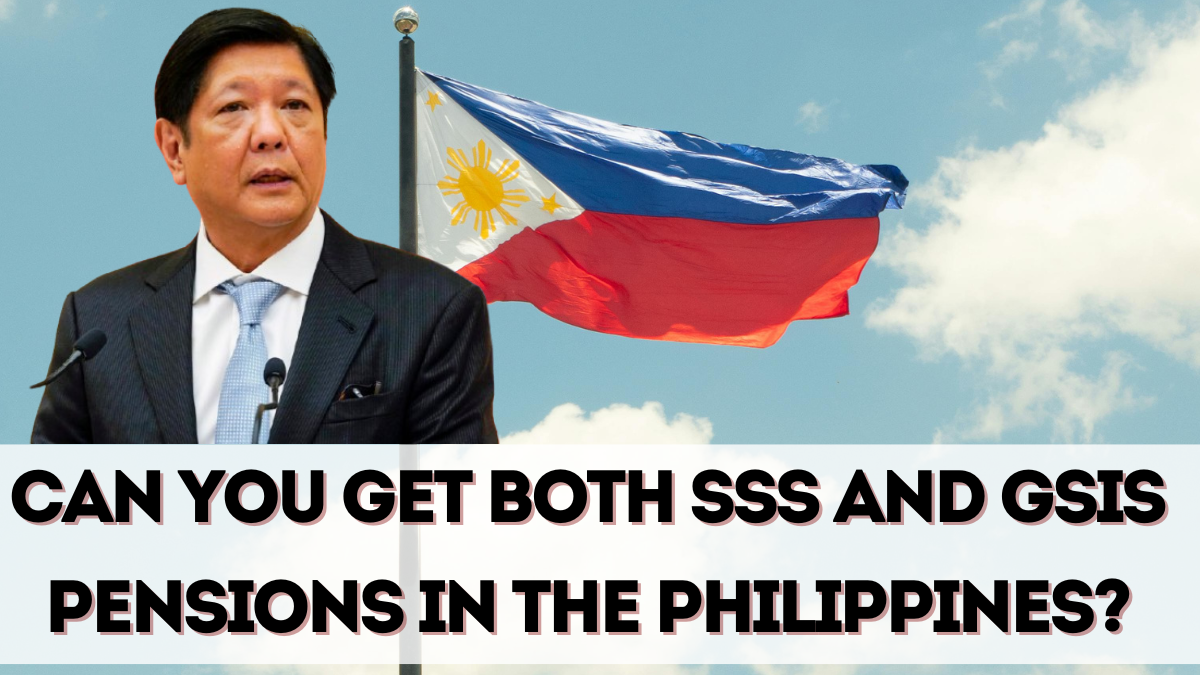The question of whether retirees can receive SSS and GSIS combined pensions is one of the most common concerns among Filipinos nearing retirement. The Social Security System (SSS) and the Government Service Insurance System (GSIS) are the country’s two largest pension programs, serving private and government sector employees respectively. Many Filipinos who have worked in both sectors wonder if they can claim benefits from both systems. The answer depends on eligibility rules, years of service, and the type of pension being applied for.

Difference Between SSS and GSIS
Before exploring the possibility of combining pensions, it is important to understand the distinction between the two:
-
SSS (Social Security System): Covers private-sector employees, self-employed individuals, and overseas Filipino workers (OFWs).
-
GSIS (Government Service Insurance System): Covers government employees such as teachers, police officers, and civil servants.
Both systems provide retirement, disability, survivorship, and death benefits, but their contribution requirements and benefit structures differ.
Can You Receive Both Pensions?
Yes, it is possible under specific circumstances. The law allows a retiree to claim both SSS and GSIS pensions if they have contributed separately and sufficiently to each system. However, there are rules to prevent duplication and abuse:
-
Members must have distinct periods of service in both sectors.
-
Contributions must meet the minimum requirements of each system.
-
Double compensation from the same period of employment is not allowed.
This ensures fairness and sustainability across both pension systems.
Eligibility Requirements for SSS Pension
To qualify for an SSS retirement pension, members must:
-
Be at least 60 years old (optional retirement) or 65 years old (mandatory retirement).
-
Have paid at least 120 monthly contributions prior to retirement.
-
Be separated from employment or have ceased self-employment.
Those who do not meet contribution requirements may instead qualify for a lump-sum benefit.
Eligibility Requirements for GSIS Pension
For GSIS retirement benefits, members must:
-
Be at least 60 years old with at least 15 years of service.
-
Not be receiving any other pension for the same service period.
-
Retire under Republic Act 8291 (GSIS Law).
GSIS offers different retirement options such as 5-year lump-sum with pension, or immediate pension.
How SSS and GSIS Benefits Work Together
When a retiree qualifies for both SSS and GSIS pensions, benefits are processed independently. Key points include:
-
Separate Contributions: Each system calculates benefits based only on the contributions made under its jurisdiction.
-
No Overlap: The same employment period cannot generate benefits in both systems simultaneously.
-
Survivorship Benefits: Beneficiaries may also be eligible to claim both SSS and GSIS survivorship pensions if the deceased contributed to both.
This makes it possible for some retirees to receive two pensions every month.
Common Scenarios
-
Private-to-Government Worker: A teacher who worked 10 years in private schools (SSS) and 20 years in public schools (GSIS) may qualify for both pensions.
-
Government-to-Private Worker: A police officer who later worked in the private sector can also qualify, provided contributions meet the required minimums.
-
Dual Contributor: An OFW who previously worked in government before migrating abroad can also claim from both systems.
Each case depends on contribution history and service record.
Benefits of Receiving Both Pensions
The ability to claim SSS and GSIS combined pensions provides several advantages:
-
Higher Income Security: Retirees enjoy two sources of monthly income.
-
Healthcare Support: Extra funds help cover medical expenses.
-
Support for Families: Survivorship pensions continue for beneficiaries.
-
Recognition of Service: Workers in both private and public sectors are rewarded.
This creates a more inclusive retirement system in the Philippines.
Limitations and Challenges
Despite the advantages, there are limitations:
-
Strict Contribution Rules: Missing contribution periods can disqualify members.
-
Processing Delays: Applying for two pensions may take longer due to verification.
-
Awareness Issues: Many workers are unaware of their entitlements or procedures.
-
Overlap Restrictions: The same employment cannot count for both SSS and GSIS.
These challenges require careful planning before retirement.
How to Apply for Both Pensions
Retirees should follow a step-by-step process:
-
File a retirement application with GSIS if eligible.
-
Submit a separate retirement claim with SSS.
-
Ensure all contributions and service records are complete.
-
Provide valid IDs, service records, and contribution statements.
-
Wait for approval from both systems, which may process benefits separately.
Applicants should begin the process early to avoid delays.
Government’s Long-Term Approach
The government continues to improve coordination between SSS and GSIS. Digital record-sharing is being enhanced to reduce delays, and awareness campaigns are helping workers understand their entitlements. In the future, better integration of both systems may simplify applications for retirees with mixed employment histories.
FAQs
Can I claim both SSS and GSIS pensions?
Yes, if you meet contribution and eligibility requirements for both systems.
What happens if I don’t have enough SSS contributions?
You may still receive a lump-sum payout instead of a monthly pension.
Can survivors receive both pensions?
Yes, if the deceased contributed to both systems, beneficiaries can claim from both.
Do I need to apply separately for each pension?
Yes, SSS and GSIS require independent applications.
Will the payout amounts be combined?
No, each system pays separately based on contributions and service.
Click here to know more.
